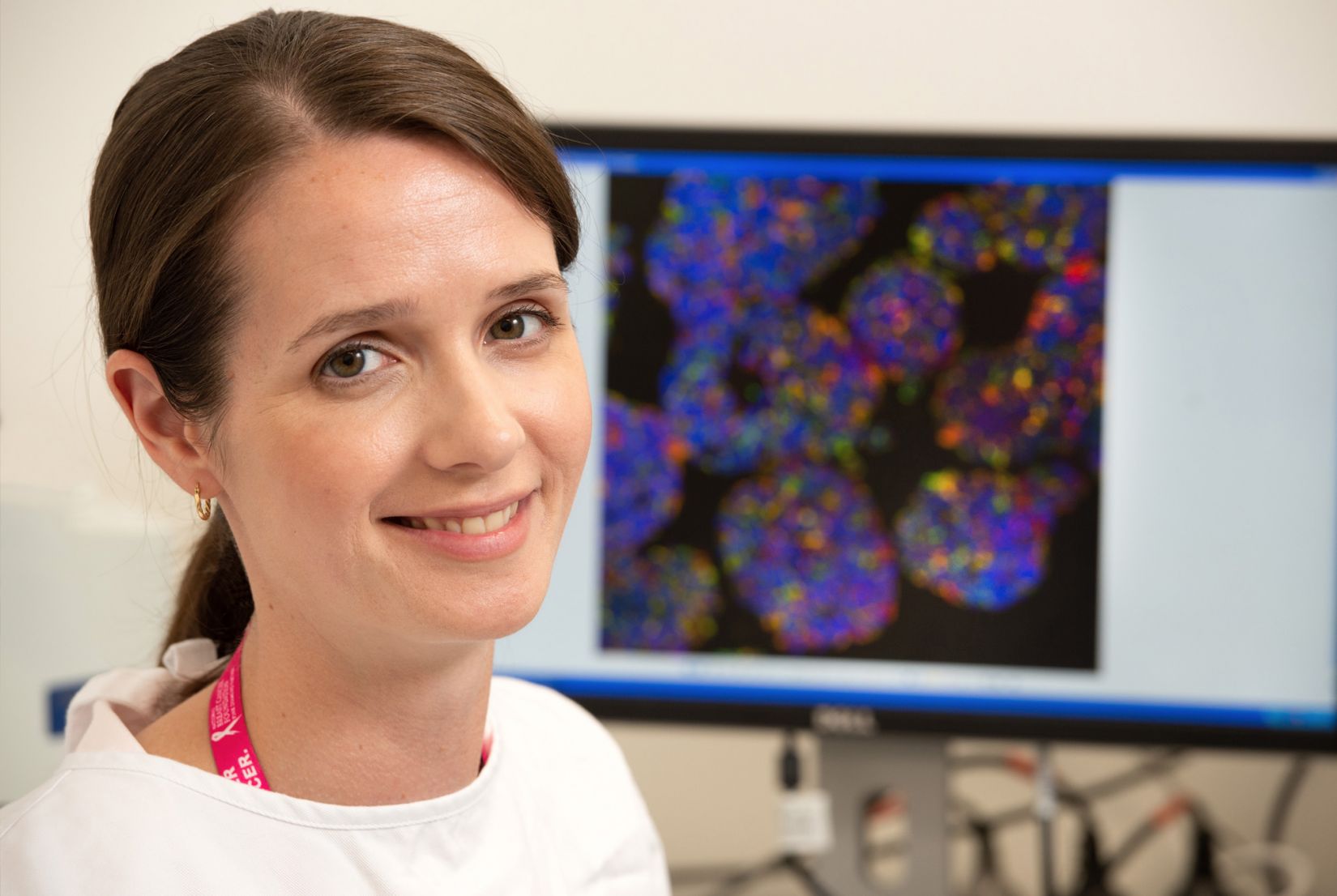When researchers are making a new drug, they face years of work in development and trials. Then, in about 90 per cent of cases, the outcome is a failure and they slide back, snakes-and-ladders style, to start again.
Associate Professor Laura Bray, from the QUT School of Mechanical Medical and Process Engineering, wants to fast-track that process – so that even if a drug is set to fail, the researcher is back on that start line faster, shaking off the failure and beginning work on their next best idea.
The key to compressing the “try, fail, then try again” process is not just a difference in speed, it’s also the addition of an extra dimension.
“Most cancer research performed in the lab is performed on a two-dimensional surface like plastic or glass and this doesn’t replicate human biology because humans are not two-dimensional,” Associate Professor Bray said.
“We use a jelly-like substance and we can put cancer cells inside and watch them grow and watch them interact with each other as we design these tissues in the lab.
“What we can also do is to use these models as a way to more specifically screen for drugs, to make drug treatments more accurate and more personalised.
“What we need to know is when those drugs are applied, how those tumour cells interact with their surrounding environment – which you don’t get with two dimensions.”
Drug design on target
The long-term aim, of building three-dimensional cell structures, is twofold: personalised medicine and drug development.
“You can use it to screen drugs for that particular patient and find out if are they resistant to a certain drug,” Associate Professor Bray said.
“Would they be of benefit to have this new upcoming drug? And you don't have to then test it on the patient but rather just on their cells.”
The process of testing possible medications on a person’s own cells is proven. The switch to use the technique in drug development is just a matter of scale, and possibly running a dual trial of cell testing alongside human testing. One challenge is the need to have a large number of cancer cells to test a drug on, and the Mater-QUT Breast Cancer Biobank is a step towards that.
Professor Bray was recently a finalist in The Australian Museum Eureka Prizes in the Emerging Leader in Science award category.
In 2012 Professor Bray was awarded the inaugural Prime Minister’s Queen Elizabeth II Diamond Jubilee Postdoctoral Award (awarded to only one woman in Australia).
She is also an ARC Future Fellow, an Australian Vascular Biology Society Achievement and Career Development Award winner, and has led her own research team for the past seven years, supporting four PhD and nine master degree students as principal supervisor.
Her mentoring and leadership roles have included being the deputy director of the ARC Training Centre for Cell and Tissue Engineering Technologies, deputy director of the Centre in Regenerative Medicine and co-founder of the Mater-QUT Breast Centre Biobank, which enables the donation of patient tissue to support clinical research into the treatment of breast cancers.
Since 2019, she has also managed a high school research placement program between QUT and two local Queensland Academy schools to boost awareness about STEM and foster a new generation of scientists.
Perhaps the most surprising aspect of Professor Bray’s career is that science was a fallback option when her ambition to be a vet hit a hurdle that many young people straight out of high school face.
“I didn't have the OP,” she said.
“I thought ‘I'll do a bachelor of science and improve my GPA so I can get in’.
“I'm not someone who has my future very planned. I’m not someone who's like ‘I'm going to be a professor and do that for the rest of my life’.
“When I was studying for a bachelor's degree, I was really doing it just because it was most similar to what I eventually wanted.”
At the end of her degree, she took up an opportunity to be a research assistant at the Mater Medical Research Institute because “it sounded interesting”.
“And that's how I serendipitously fell in love with research, just from that first exposure,” she said.
Although she, again, didn’t have the grades initially to take the next step, with the help of her supervisor she did her honours degree, which was followed by a PhD.
“My PhD supervisor was advertising this project in tissue engineering for eye research,” Professor Bray said.
“He wanted to develop three-dimensional corneal tissues, the outer surface of the eye, using silk derived from silkworm cocoons and I thought this sounded really cool.”









Aligned with the United Nations Sustainable Development Goals
In 2015, UN member states agreed to 17 global Sustainable Development Goals (SDGs) to end poverty, protect the planet and ensure prosperity for all.
Latest stories
29 April 2024
Half our colleagues suffer pain at work, but periods are still a taboo subject
While employees would probably tell their boss about a stomach upset, many who menstruate and feel unwell as a consequence every month, are unlikely to talk about their difficult periods.
Read more of Half our colleagues suffer pain at work, but periods are still a taboo subject
10 April 2024
Supermarkets need to change the way they operate in Australia
Australia’s big supermarkets have been put on notice. A Treasury-commissioned review recommends making the existing voluntary food and grocery code of conduct mandatory. But will this be enough to change the way supermarkets operate in Australia?
Read more of Supermarkets need to change the way they operate in Australia
8 April 2024
Why is Australia helping to block a move to tax multinational corporations properly?
Treasurer Jim Chalmers says it will make big multinationals pay their fair share. But in broader forums, Australia is showing itself to be less keen to make multinationals pay up.
Read more of Why is Australia helping to block a move to tax multinational corporations properly?


